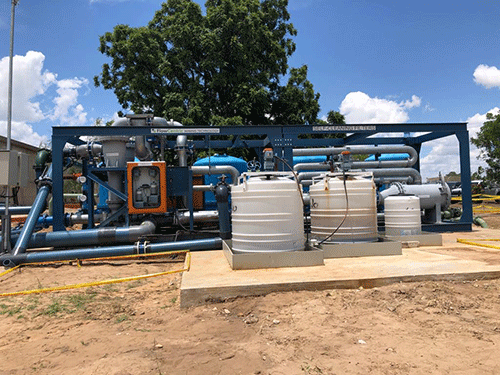THE government over the long-term needs an estimated N$10.5 billion for both bulk and rural water projects. The water programme is aligned and aimed to contribute to attaining Vision 2030, Sustainable Development Goal (SDG) 6, Fifth National Development Plan (NDP 5) and the Harambee Prosperity Plan (HPP).
The SDG6 requires Namibia to ensure access to water and sanitation for all by 2030. The NDP5 and the HPP also identify the water sector as one of the focus areas under the economic progression pillar. One of the desired outcomes is that “By 2022, Namibia has a sustainable production and consumption of water resources, resulting in improved access to safe drinking water for human consumption, agriculture and for industrial use”.
However, water affairs minister Calle Schlettwein argued during the budget motivation last week that the allocated budget for this financial year will not be adequate to implement the envisaged programmes and projects. He is asking the National Assembly to approve a budget allocated to the water programme of the ministry with an amount of N$687.4 million, which represents about 0.89% of the total appropriated expenditure.
He said the allocated budget needs to be supplemented with extra-budgetary resources. “We are, therefore, continuing to engage with our development partners and the Ministry of Finance on how best to achieve these objectives,” he pointed out. Equally, Schlettwein said the impact of the Covid-19 pandemic and climate change and variability pose challenges to the implementation of this programme.
“However, the sector has managed to record some progress with regards to access to water, especially to rural water communities who are usually hard-hit,” the minister noted. He announced that the African Development Bank (AfDB)-funded Namibia Water Sector Support Programme (NWSSP) is geared to disburse over N$300 million during 2022/23.
Further, more than N$353 million over the Medium- Term Expenditure Framework (MTEF) will be availed to complement the government efforts in, amongst others, upgrading the Rundu and Oshakati water treatment plants, developing the Ohangwena II aquifer, and upgrading the water supply networks countrywide. Additionally, the ministry, through the technical committee of experts for the Cabinet Committee on water supply security, will continue with the implementation of measures aimed at addressing water supply security in the country.
This will be done by undertaking activities such as the upgrading of the Gammams direct potable reclamation works, a refurbishment of the Kuiseb collector and Kuiseb-Swakop pipeline, as well as the replacement of the Schwarzekuppe-Swakopmund and Omdel Wlotzkasbaken pipelines to improve water supply at the central coastal areas.
This is coupled with the upgrading and extension of the Oshakati water treatment plant and the Rundu purification plant to improve water supply in the central-northern areas and Kavango East. The other project is the construction of a new desalination plant, central-coastal area supply scenario (and/or the purchasing and refurbishment of the existing Orano plant) along the central-coastal area by means of envisaged private-public partnership (PPP) principles. The regional distribution of functional water points across Namibia include 425 points in Erongo, while Hardap has 471, Oshana recorded 646 functional water points, and in //Kharas there are about 491 points.
In Kunene, there are 1 069, Omaheke has 525 water points, Omusati with 1 503, while Kavango West has 278 and a total of 257 are in Otjozondjupa. Kavango East has 277 water points, Oshikoto has 950, Ohangwena’s water points stand at 1 068, while Zambezi has 639.
–anakale@nepc.com.na


